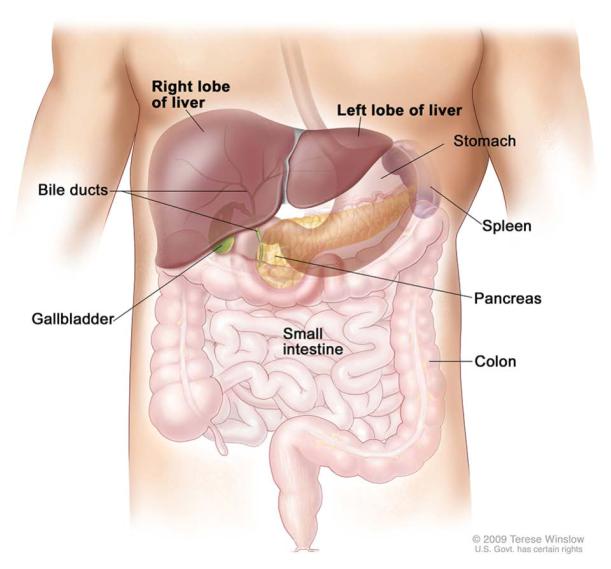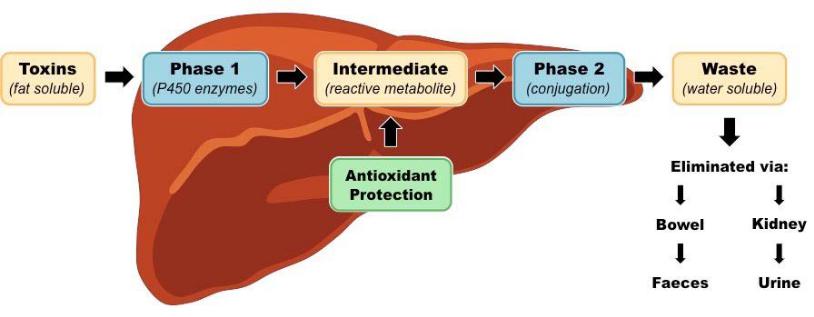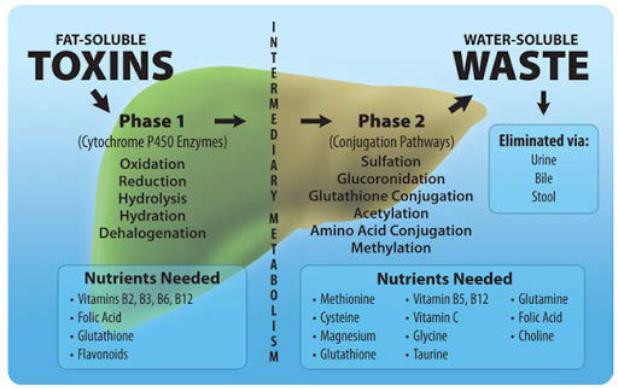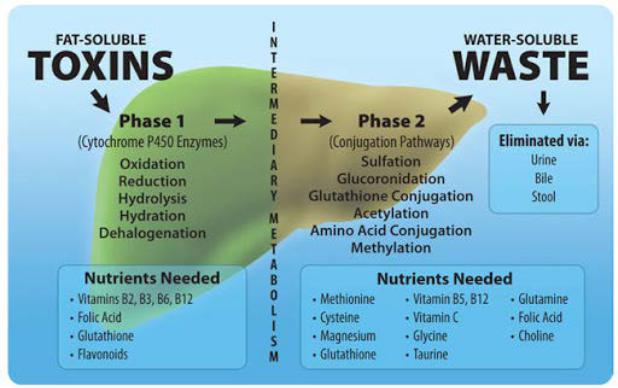
- •Liver
- •Liver and detoxification
- •The first way of intoxication
- •The second way of intoxication
- •Liver and carbohydrate metabolism
- •Liver and protein metabolism
- •Liver and fat metabolism
- •Liver and blood coagulation
- •Liver and hormone inactivation
- •Liver and Vitamins
- •Depot and excretory role of a liver
- •Reactive Oxygen Species (ROS)
- •Cellular Defense Against ROS
- •Thymol test
- •Quantitative determination of serum alkaline phosphatase (ALP) activity
- •Role of kidneys in water-salt metabolism
- •Regulation of sodium excretion. Renin
- •Regulation of sodium excretion. Renin
- •Antinatriuretic system
- •Natriuretic system
- •Urine
- •Physico-chemical properties of urine
- •Proteinuria
- •Functional proteinuria
- •Organic proteinuria
- •Prerenal proteinuria
- •Renal proteinuria
- •Postrenal proteinuria
- •False proteinuria
- •Qualitative determination of protein in urine
- •Glucosuria
- •Causes of Glycosuria
- •Extrainsular glucosuria
- •Hepatic and renal glucosuria
- •Primary and secondary glucosuria
- •Insular glucosuria
- •Clinical diagnostic value
- •Fructosuria
- •Ketonuria
- •Detection of ketone bodies in urine
- •Bilirubinuria
- •Qualitative detection of bile pigments in urine
- •Saliva
- •Chemical composition of saliva
- •Saliva proteins
- •Biological role of saliva
- •Mucins
- •Lysozyme
- •Saliva Whey Proteins
- •Ferrous enzymes
KUBAN STATE MEDICAL UNIVERSITY
KUBAN MEDICAL INSTITUTE
DEPARTMENT OF FUNDAMENTAL AND
CLINICAL BIOCHEMISTRY
Functional Chemistry.
Part 3
Krasnodar
2020

Liver
A liver is a vital gland of external secretion of vertebrates, including humans, located in the abdominal cavity (abdominal cavity) under the diaphragm and performing a large number of different physiological functions. The liver is the largest gland of vertebrates.

Liver and detoxification |
Let’s write! |
•In the liver, toxic substances are formed that are formed in the intestines by microbes (phenol from tyrosine, indole and skatol from tryptophan).
•Bacteria and other pathogens are removed from the blood of sinusoids by Kupffer cells.
•In the liver, many chemical compounds (aromatic hydrocarbons, nitro compounds), drugs are decomposed.
•The products of interstitial metabolism (biogenic amines, bile acids) in the liver bind to various neutralizing agents, in particular, glucuronic, sulfuric acids, glycerin, taurine, cysteine, and are excreted in the form of salts.

The first way of intoxication
The first method is the chemical modification of the active site of a substance by oxidation, reduction, hydroxylation, sulfoxidation, deamination, dealkylation or methylation.
•These processes involve microsomal enzymes (monooxygenases associated with cytochrome P450 and b5) and cytoplasmic glutathione transferases.
•Some substances (barbiturates, haloperidol, glutetimide) induce microsomal liver enzymes, especially cytochrome P450; other substances (chloramphenicol, cimetidine, disulfiram) inhibit them. Ethanol can have both effects. The simultaneous administration of two drugs metabolized by the same microsomal enzymes can lead to an increase or decrease in the pharmacological action of one or both of them

The second way of intoxication
•The second method of hepatic elimination is the conversion of fat-soluble substances into water-soluble (glucuronides, sulfates, acetyl, taurine and glycine derivatives), which are then excreted in urine or bile.
•The most common conjugation reaction with glucuronic acid is catalyzed by glucuronyl transferases.
•As a rule, conjugated forms are more water soluble and less active than the original.
